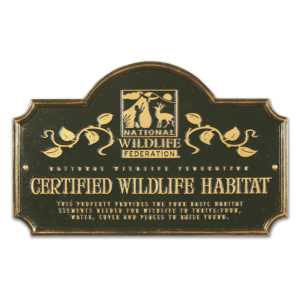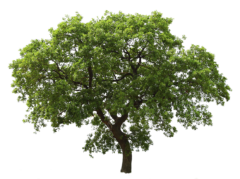By: Robin Smith
Waterwise gardening is both simple and hard. There’s more to it than planting the latest popular “drought tolerant” plants.
Working with Nature is Simple
Nature is wise with a built-in, efficient system of providing everything natural vegetation (trees, shrubs, grasses) needs to thrive – even in drought. This natural system filters water, air, provides food and shelter for wildlife. Everything has purpose, is connected and functions in an ecosystem, otherwise known as the natural life-cycle. Nothing is man-made in the ecosystem.
Change is Hard
Most common folk are influenced and immersed in a ubiquitous consumeristic culture: everything is store bought. We are sadly out of touch with Nature and misguided by companies focused on profit. The landscape and gardening industries are huge and tend to exploit consumer ignorance. In fact, broader water wise campaigns, promoting drought tolerant plants, is a billion dollar industry. Drought tolerant plants are NOT necessarily native plants. There is an important difference.
Native vs. Drought Tolerant = Biological Function
Native trees and plants are self-managing because they “co-evolved” with the soil and weather conditions, along with insects, birds, animals, in their area, over thousands of years. Southern California has historical drought conditions so many native plants sustain themselves well during drought while also functioning to support native insects, birds, wildlife, forming “plant communities”, which create a vibrant working ecosystem. Biology is at work.
Drought tolerant plants may come from other states, Africa, China, Australia and be inhospitable to local plant communities. They are biologically low functionaing and do not provide food for native insects and birds. “Drought tolerant” sounds enviromental and beneficial but upon a closer look, we learn it’s not what we think. Biology is fragmented or shut down.
Native vs. Ornamentals, Invasives
Native plants form plant communities or plant alliances. Ornamental plants do not. If you want your garden to support life, avoid non-native plants (ornamentals) because the plants have little to no “biological function” in your local ecosystem. They are primarily decorative, needing high water and artificial life support from furtilizers, pesticides. They may cause harm to the ecosystem. Ornamental plants causing damage are called “invasive” – meaning they grow agressively and crowd-out natives – destroying the ecosystem. Nature rebels when plants are not in their assigned places! Agriculture and ornamental gardening has introduced so many invasives, removing them is a constant battle. Here are some Diamond Bar invasive plants. Do some reading to find out about California Native plants. Review the California Native Plant Society website for information. Also, check-out the California Invasive Plant Council.
Go Native = Restoring California Native Ecosystems One Yard At A Time
Resist the impulse to plant decorative ornamental plants. (We don’t live in Ireland or Tahiti, guys!) Learn about your “ecoregion.” Realize trees and plants are LIVING, and are vital parts of an ecosystem somewhere. Realize non-native plants we find here ARE native plants from someplace else! Get it? Nature has programmed plants to function best in their original habitats where they co-evolved for a very long time. Work WITH Nature.
Choosing plants which Nature has put here, restores environmental integrity = more insects (bird food), birds, wildlife, clean water, air and beauty. Oh, and the cost is minimal after the habitat is restored and re-established! (A garden store manager told me, he’d be out of business in six months if he sold mostly Native plants.)
Native Means Imagine What Was Before
Go back in time and pretend you’re living a couple hundred years ago. Native Americans lived in Diamond Bar for 9 thousand years, living off the oaks, wildlife, grasslands. Willow riparian woodlands, chaparral and coastal scrub were sacred to the Kizh Nation. Plant communities provided food and shelter. This peaceful, tribal people lived in a paradise landscape as managers and protectors of Nature.
Much of the native vegetation is still here.
Which is one reason why our native habitats can be restored, one property at a time.
Go with Nature. It’s smart, cost effective, healthy, sustainable and beautiful! It is how to live Fully Green.
Meanwhile, my own California Native garden is a certified National Wildlife Habitat yard. Critters love being here; we love them being here. We have over a half acre, no lawn, no pesticide, no sprinklers, no weekly mowing and leaf blowing, and only a $40 water bill. — Robin, January 2018

